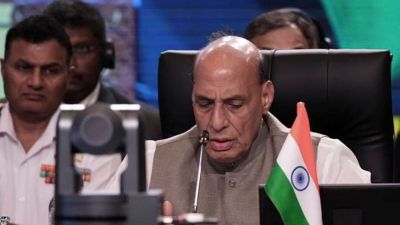As the Working Mechanism for Consultation and Coordination on India-China Border Affairs (WMCC) met for the fifth time since the border standoff began in May, they said that the next round of the meeting of Senior Commanders “should be held at an early date so that both sides can work towards early and complete disengagement of the troops along the LAC in accordance with the existing bilateral agreement and protocols, and fully restore peace and tranquility”.

After the WMCC meeting, the Ministry of External Affairs said that the two sides “reviewed the current situation along the Line of Actual Control (LAC) in the India-China border areas and had frank and detailed discussions on the developments since the last meeting of the WMCC on 20 August, 2020”.
Story continues below this ad
ExplainedNo headway, but no escalation
Indian and Chinese diplomats sat down on Wednesday and held talks. While there is no headway in the border standoff, the situation on the ground has not escalated yet. Key will be to continue with the non-escalation and then move towards de-escalation.
“The two sides attached importance to the meetings between the two Defence Ministers and the two Foreign Ministers held earlier this month. They also noted that the agreement between the two Foreign Ministers should be sincerely implemented to ensure disengagement at all the friction points along the LAC,” it said.
In this regard, it said that the two sides “positively evaluated the outcome of the 6th Senior Commanders meeting on 21 September. They emphasized the need to implement the steps outlined in the joint press release issued after the last meeting of the senior commanders so as to avoid misunderstandings and to maintain stability on the ground. In this context, the need to strengthen communication, especially between the ground commanders, was emphasized by both sides.”
The MEA statement also said that both sides agreed to continue to maintain close consultations at the diplomatic and military level. In this regard, “they agreed that the next (7th) round of the meeting of Senior Commanders should be held at an early date so that both sides can work towards early and complete disengagement of the troops along the LAC in accordance with the existing bilateral agreement and protocols, and fully restore peace and tranquility,” the statement said.
READ | Chinese investment pacts, private JVs invite Govt scrutiny
At the 19th meeting of the WMCC on Wednesday, the Indian delegation was led by Joint Secretary (East Asia) from the Ministry of External Affairs. The Director General of the Boundary and Oceanic Department of the Chinese Ministry of Foreign Affairs led the Chinese delegation.
Story continues below this ad
Joint Secretary in the MEA Naveen Srivastava, who led the Indian delegation, was part of the last Corps Commanders meeting in Moldo last week.
Pushing its old claim line in Ladakh and hardening its position on the situation there, Beijing had on Tuesday said it does not recognise the Union Territory of Ladakh and is opposed to the construction of Indian infrastructure there.
New Delhi had reacted sharply, saying it has “never accepted the so-called unilaterally defined 1959 Line of Actual Control”, and that it is “untenable”.
This exchange comes a week after their military commanders met at Moldo following the Moscow agreement between the foreign ministers to dial down tensions along the LAC.
Story continues below this ad
READ | IAF fully resolved to counter any ‘misadventure’ in eastern Ladakh: Air Chief Marshal RKS Bhadauria
Beijing’s comments now are contrary to the spirit of the conversation between External Affairs Minister S Jaishankar and Chinese Foreign Minister Wang Yi on September 10. China’s hardening of position was also reflected in a statement in which it said that it abides by the LAC as proposed by Premier Zhou Enlai to Prime Minister Jawaharlal Nehru in a letter dated November 7, 1959.
In New Delhi, the MEA responded to this statement. “India has never accepted the so-called unilaterally defined 1959 Line of Actual Control (LAC). This position has been consistent and well known, including to the Chinese side,” MEA spokesperson Anurag Srivastava said on Tuesday.
The Indian response, sharp in tone and tenor, after the sixth round of Corps Commander-level talks, which was also attended by a senior Indian diplomat who leads the WMCC, signals that the two sides have hardened their positions diplomatically as well.









